Final Fantasy IV (Nintendo DS) Review
By Rudy Lavaux  12.05.2010
12.05.2010

Final Fantasy III was one of those first generation DS titles that stood out for really showing what the hardware was capable of in terms of visuals, especially since the majority of other DS games released at that time looked like they could have been handled by the Game Boy Advance. Being the last classic Final Fantasy left unreleased outside Japan at that point, and with the apparent lack of role playing games being released for the system so far, FFIII was destined to meet with commercial success. It became the first Third Party DS title to become a million-seller in Japan, and Matrix Software's reputation for really pushing DS was forged for the next few years. In such conditions, the next Matrix Software title was eagerly awaited, and it was no big surprise when it was revealed as being the next game in the series: Final Fantasy IV. The DS edition is actually the fifth version of the game to date, after releases on the Super Nintendo, PlayStation, WonderSwan Color, and even the Game Boy Advance, only two years prior to this 3D remake. One thing is for sure: Square Enix really loves its old game.
The story in Final Fantasy IV revolves around Cecil Harvey, a Black Knight at the head of the Red Wings, the air force of the Kingdom of Baron, a belligerent nation that seeks the power to rule over the world. Cecil was sent on a mission by the King, his orders being to bring back the sacred crystal of Mysidia, one of the four crystals that exist in the world. During his mission though, after murdering the innocent people trying to protect their crystal, Cecil feels that what he's doing out of loyalty to his King is extremely unjust.
Upon relinquishing the Water Crystal to Baron, Cecil seeks answers from his King, who he believes is no longer acting in the same merciful way as in the past. The King considers such insubordination to be treasonous and immediately relieves him of his duties as head of the Red Wings, instead sending him to the Valley of Mist to carry out a final task for his liege. However, Cecil's friend Kain Highwind, Commander of the Dragoon Knights, speaks in his defence. The King suggests that Cecil redeems himself by slaying the deadly Eidolon, and then taking the Carnelian Signet to the village of Mist, home to a very old tribe of Summoners. The ring is revealed to be a trap that completely eradicates the people of Mist, torching their village. Cecil is in shock and decides that, from now on, he will do whatever he can to prevent his King from doing any more harm. During his quest, many other characters join Cecil...and leave too, sometimes in rather traumatic fashion.
If Final Fantasy IV is known for anything, it has to be for its cast of characters that only stay in your team for a short time, some never to return, yet all leaving a major impact on the player. At the time of its original release, this game had one of the largest casts of playable characters ever imagined for a RPG. It remains the only Final Fantasy to date to let you play with a team of five characters at the same time during battle. There was no such thing as character swapping or party management in the series at the time, so in order to achieve a large cast of playable characters, Square Enix had to force the storyline so that it ejected characters from the spotlight to make room for the next new one...or to welcome back another that left for a brief moment. It worked well in 1991, but compared to other recent entries into the RPG genre, it feels like an unnecessary, somewhat antiquated feature now, especially given that the Game Boy Advance version changed the rules a bit by adding new plot elements that reincorporated supposedly lost forever characters into the storyline and allowed for character swapping near the end of the game. It's frustrating, too, that you get attached to your characters, level grinding often to turn them into decent fighters, and then out of the blue they disappear.
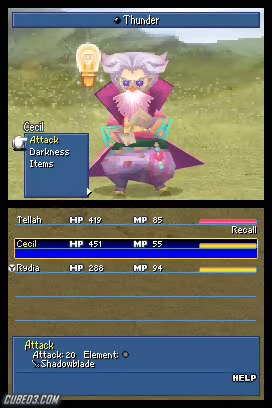
Let us say that the DS version remains true to its roots. It should be noted that the original developers were involved in this remake, so it's likely they preferred to stay as close as possible to the original plot. However, a new system makes its debut here, the 'Augment System'. This system lets you attribute abilities from characters that leave you to other characters that remain in your party. I will leave it to you to decide whether changing this from the party management option of the GBA version is a good thing or not. The Augment System makes the game a bit easier, yet allows more freedom in character customisation; something that's clearly reminiscent of later games.
Nonetheless, Final Fantasy IV was revolutionary when it was released for the Super Famicom in 1991, in terms of story depth, the way characters were presented, the level to which their relationships were developed (despite the random to'ing and fro'ing from your party at times), as well as how the core tale was complemented perfectly by magnificent musical compositions that accurately convey the emotions, plus efficient, if very limited, sprite animations. Sure, it has aged a lot and perhaps doesn't compare to the RPGs released nowadays, yet it has a solid, classic storyline that remains a monument in the history of console RPGs. It paved the way for future instalments (and future RPGs, full stop), and certainly should not be ignored. If you think you're a role-playing fan and you haven't played this one yet, then here's a good chance to catch up on that. For the rest of you, there is the lure of the script being considerably extended. Director of the project, Takashi Tokita-san, has previously stated that due to cartridge restrictions back in the days of the SNES, the original script was reduced to a quarter of its intended length. This is the same script used in later editions of Final Fantasy IV. However, since members of the SNES original's team were heavily involved in development, alongside Matrix Software, as much of the 'lost' scenarios were introduced into this DS remake. Most come in the form of flashbacks during the game, whilst other elements has been worked into the re-translated text in general, in addition to brand new inclusions to give even the most stalwart Final Fantasy fan something new to gain from playing this. There is even the nice little touch of going into the menu screen and a thought bubble popping up, showing your main character's thoughts at that present time.
When you beat the game once, there's the new possibility for you to save your game and start a New Game+, carrying over certain things you got on your first playthrough: all the Augment skills, the Bestiary, map completion rates and any rare or stats-up items that you had left upon beating the game, such as Soma Drops, or Silver and Golden Apples. There are new enemies to be beaten on the Moon and Mount Ordeals, also. If you have played Chrono Trigger before, be warned that it's not quite the same kind of New Game+. This time, you don't carry over your experience points or levels, and you can only start a New Game+ three times on the same file. Why is there this limit? I don't know...
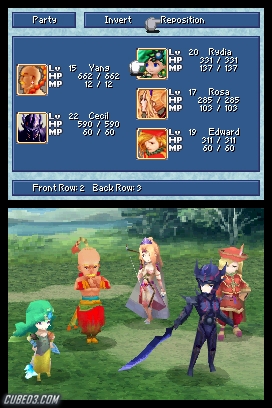
What really stands out in this DS remake is obviously the visual presentation. The game follows other 3D titles in the series by using different character models for playable phases and the cut-scenes. The models used in these are gorgeously animated, highly detailed and they even have some lighting effects on them. The others are just good, though nothing too special. Speaking of the cut-scenes, the terrible CG movies of the PlayStation version are gone, replaced with real-time 3D, which are far better overall. The camera angles really help give a cinematic feeling to the story, similar to those of the latest instalments in the series. The characters now have voice acting, too. There are some cheesy accents in there and whilst the English dubbing is okay overall, it is still not on par with the Japanese one. Final Fantasy IV also features one of the best soundtracks in the series, with Nobuo Uematsu's music retaining its glory even after all these years, and while the music could surely have benefited from orchestral arrangements, the score is rendered perfectly well on DS.
The overhaul that the game went through for the DS version isn't without its downsides, however. The shift to 3D for Final Fantasy VII slowed down the battle speed, and this happens in Final Fantasy IV now as well. The battles are a bit slower paced and if you played any of the 2D versions before, you will really feel like you're playing a slightly slowed down version, not unlike how Final Fantasy VII to Final Fantasy IX had slower paced battles compared to the previous 2D episodes.
However, the Auto-Battle system added in this version helps speeding up a bit the process of level grinding. A simple press of the X button while in battle sets your fighters to Auto-Battle mode until you press X again. In this mode, all your characters will perform pre-set actions that you assign to each from a dedicated menu beforehand, outside of battle. They can be regular attacks, using a certain spell, or the characters' class special move. It's nowhere near as complex as the Gambits from Final Fantasy XII, but it still helps speeding up the battles a bit when you need to gain some levels to advance in the story.
The battle system itself is your classic turn based affair. This game literally invented the Active Time Battle System. On the Super NES though, you couldn't see your gauge showing who was going to be next to attack. This was changed in the next versions, and the DS version takes advantage of the enhanced ports released prior to it. Each character waits for their gauge to fill, and when it's full, chooses which action to perform. There is then an additional amount of time taken to prepare the move, depending upon which action you chose; a powerful offensive spell will take longer to prepare than a regular attack with a sword. This preparation time can be seen on your gauge too, as in the GBA version, except this time it's easier to tell whether a character is waiting for its turn or preparing its next move, thanks to the different colours used.
Another thing that's a bit disappointing is that you can't see the Bestiary any time you want as you could previously do in the GBA version, with this DS remake forcing you to visit the Big Chocobo every time you want to see how complete it is. It would have helped a lot to have it handy all the time, especially if you're trying to loot on enemies for some rare item drops. Speaking of the Big Chocobo, there is new content here as well. After achieving certain goals in the game, the big bird-like creature lets you watch the cut-scenes anytime you want and play some mini-games. These reward you with statistic points for a new Eidolon called Whyt (Pochyka in Japanese) that you can summon to fight on your side instead of Rydia. These games are played with the stylus and are nothing exceptional, but are at least a welcomed addition. Granted, once you reach perfect scores on them you can unlock exclusive outfits for the little creature, such as Dragoon. Completing other objectives award you such skins for Whyt too, but what those are is up to the player to find out. Also, the Big Chocobo doesn't store your items anymore, which can prove to be frustrating if you like to keep your item inventory clean to avoid having to scroll too much for finding a single item, especially during battles where the item window is so small.
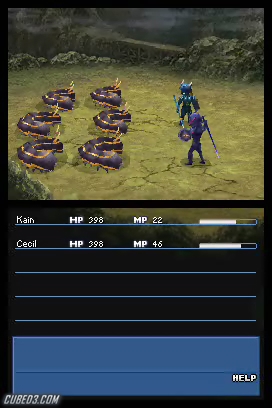
Another change, this time an amusing one, is that the in-game characters speak each others' names in the cut-scenes, meaning Namingway, the character that used to let you rename your characters in previous versions, is left redundant. You encounter him at several points throughout the game, going from job to job since he lost his primary purpose. This leads to some comical scenes that earn you some surprise rewards. For example, early on in the game, after making the player attempt to rename Cecil, albeit in vain, Namingway skulks off and eventually pops up again under the new guise of 'Mappingway,' offering prizes for exploring every nook and cranny of an area, encouraging players to achieve a 100% completion rank on the lower screen map that automatically updates as you wander around.
The DS rendition of Final Fantasy IV can be considered the definitive version. At the same time, though, it's a shame that it came out just over two years after we received the equally impressive GBA version, especially considering the fact that the GBA iteration was already playable on the DS thanks to its second slot (of course, this ability is removed on DSi, but that system was not yet on the market when this game was released worldwide). Despite it being the exemplar version, you may want to think twice about investing the money before at least taking a closer look at all the other big-name RPGs that the DS has to offer, unless you are a die-hard fan of the series or this episode in particular, or you have never played Final Fantasy IV previously. That doesn't mean it's a bad game; far from it! It is a monument in the history of Japanese RPGs and all the additions to this version put together help to give a fresh feel to the game, even to those that have played it over the multiple past versions. Anyone reading this that has not played it yet, you really have no excuse for not jumping on this one immediately.
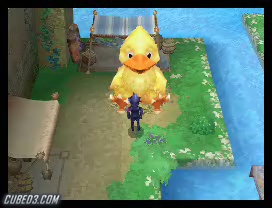
Cubed3 Rating
Exceptional - Gold Award
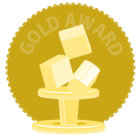
Final Fantasy IV is still a cult-classic, even after all those years, and it should be highly recommended to any fan of the series and/or the genre. If you put all versions side-by-side, this one is arguably the best, because all the improvements it brings both do the original justice and help to modernise the old game. Even if it's just as a reminder of the progression of RPGs, Final Fantasy IV should not be skipped.
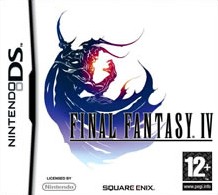
![]() 9/10
9/10
![]() 8/10
(3 Votes)
8/10
(3 Votes)
 Out now
Out now  Out now
Out now  Out now
Out now  Out now
Out now Comments
Comments are currently disabled

 Sign In
Sign In Game Details
Game Details Subscribe to this topic
Subscribe to this topic Features
Features





 Top
Top

